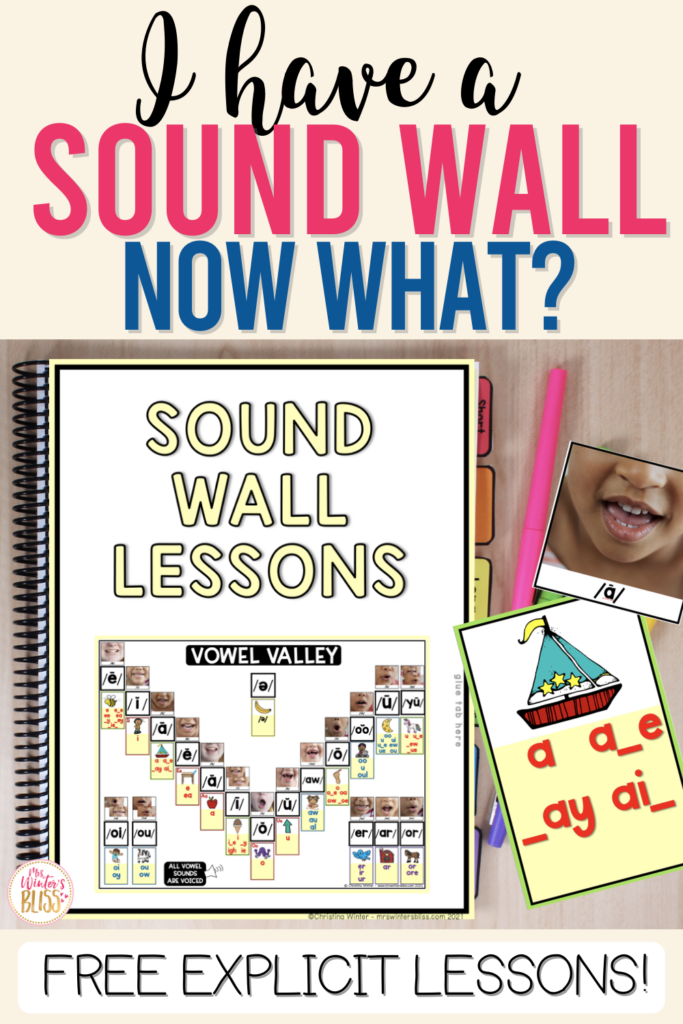

In this post I’m sharing details about my Sound Wall Teacher’s Guide. This resource was created as a companion to my science of reading-aligned Sound Wall, but it can be used with any sound wall or phonics scope & sequence. It is filled with information, lesson plans, and student activities you need to introduce and use a sound wall in your Kindergarten, 1st grade or 2nd grade classroom.
So you heard all the buzz around sound walls and bought one for your classroom! Hooray! You spent hours printing, cutting, laminating, and arranging it just-so on the wall. Everything looks great but now you’re wondering, “What’s next?? How do I use this thing?!” If this sounds familiar, know you are NOT alone!

After receiving countless emails and messages asking me, “How do I use my sound wall?” I knew I could help by sharing what I’ve learned through countless hours of research and decided to create a Sound Wall Teacher’s Guide. This companion guide educates you on how to make your soundwall a meaningful learning tool in your classroom. It provides you with explicit and systematic lesson plans and activities for introducing and using a sound wall with your kindergarten, first or second grade students.
It’s so exciting that teachers want a sound wall and want to deepen their understanding of how to use one in their classroom. Today I’m thrilled to share details about the Sound Wall Teacher’s Guide. I’ll give you a glimpse into each of the guide’s four sections and leave you with valuable freebies you can begin using in your classroom today!
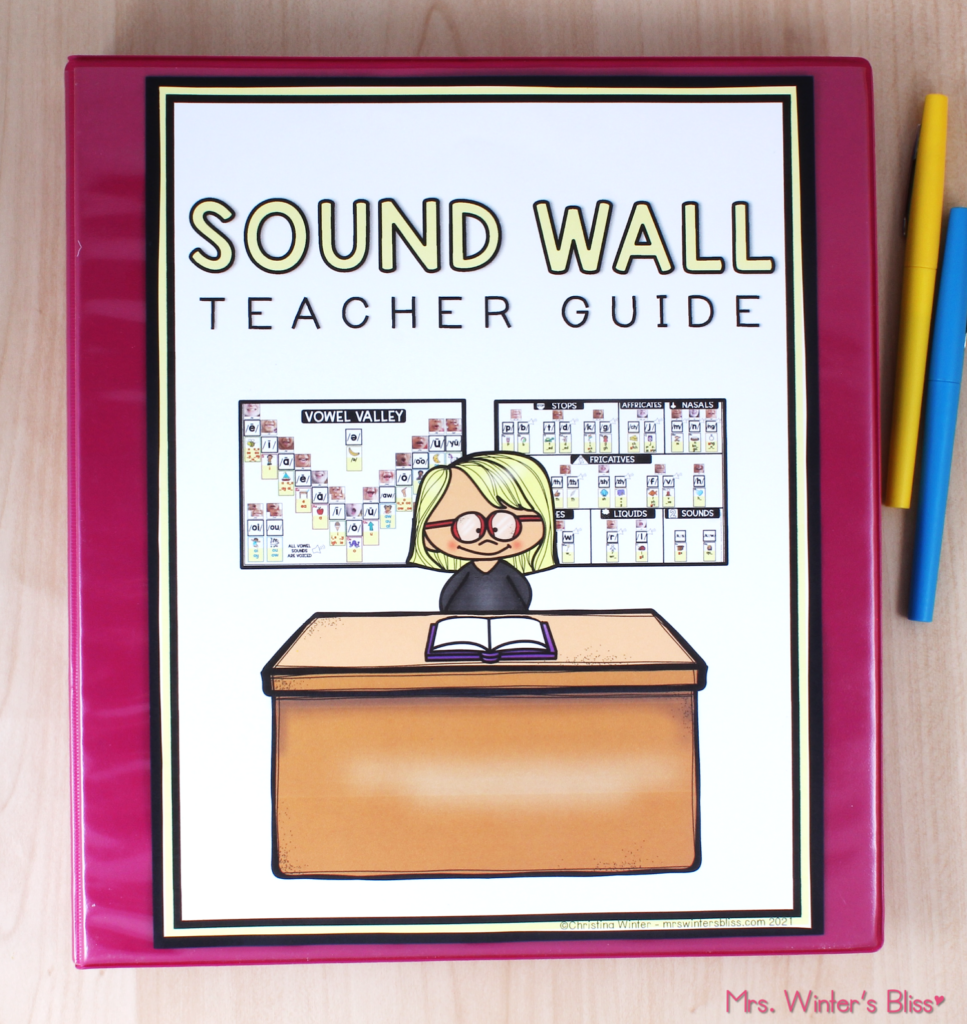
Let’s take a closer look at all you’ll find in my Sound Wall Teacher’s Guide!
Part 1: What is a Sound Wall?
Section 1 offers you valuable background information about sound walls and how they are different from word walls. I’ve shared an overview of the consonant sound wall and vowel valley (including definitions of each phoneme group), and information about the importance of both.
Section 1 also provides you with a Phoneme Grapheme Dictionary. This new resource matches every phoneme with the correct graphemes and keyword. This dictionary comes in handy when you set up your sound wall because it ensures all the components are matched up correctly and in the right place!
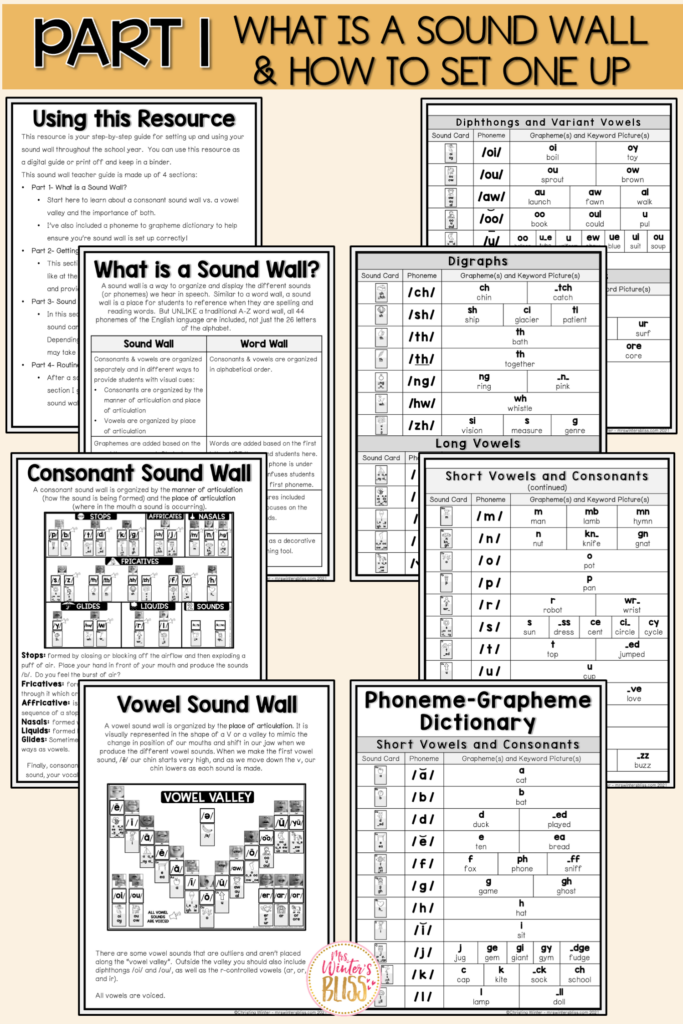
Part 2: How to Start Using A Sound Wall
Implementing a Sound Wall requires a lot of new thinking and with that comes a lot of great questions. Knowing this, I decided to begin section 2 with commonly asked questions and answers! If you’ve wondered about something, chances are someone else has too and hopefully, you can find your answer here! If not, I’ve also included a list of outside resources that have been super helpful to me through my learning.
In Section 2 you’ll also find research-based suggested phonics skills scope and sequence for kindergarten, first, and second grade. This guide works with any sound wall and any phonics scope and sequence. If your school doesn’t provide you with one, know you can find one here.
You’ll also get visual examples of exactly how your sound wall should look at the start of the year in a kindergarten, first and second-grade classrooms.
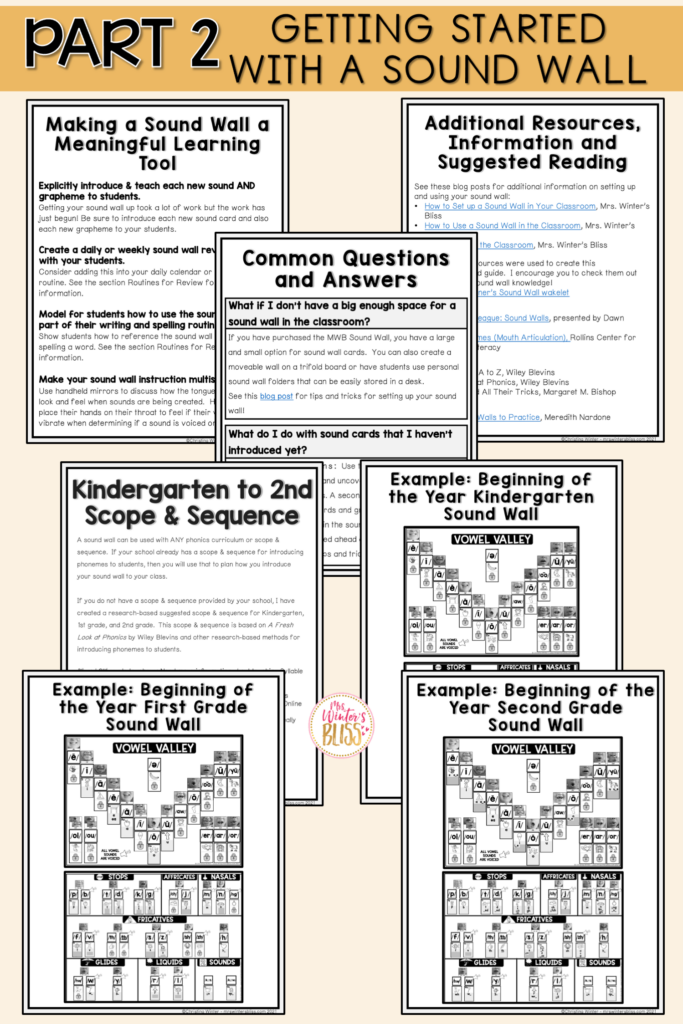
Part 3: Sound Wall Lesson Plans
Section 3 is the real meat and potatoes of the resource! It’s here where you’ll find 47 step by step lesson plans for introducing the phoneme & sound card, articulation gestures and graphemes.
The lessons are divided up by the type of sound (stops, fricatives, glides, etc). You can expect each one to take 2-3 days to complete.
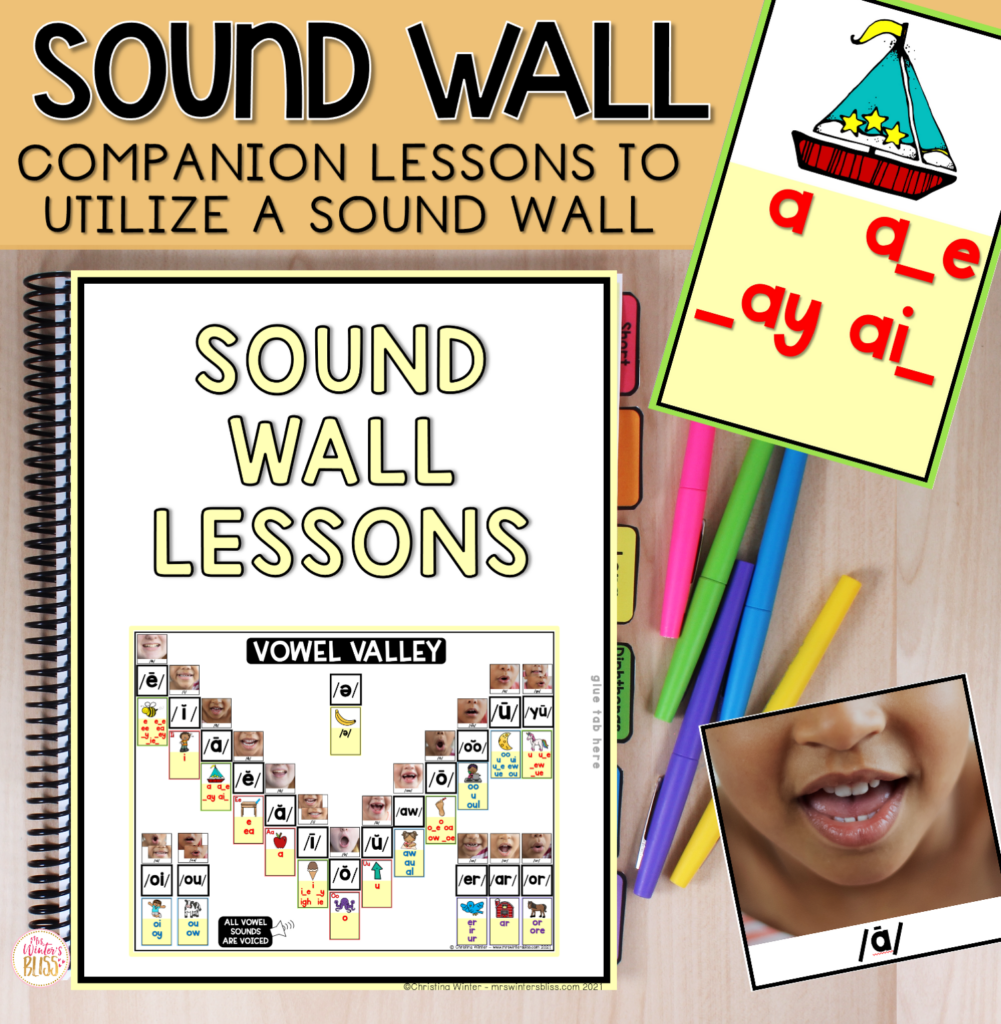
Each lesson follows the same format and it looks like this:
💕 First, introduce the sound card. Discuss the phoneme (sound) it makes. Say the sound, teach them what type of sound it is, and discuss whether it is voiced or unvoiced, as well as what that means.
💕 Next, teach the articulation gesture for the sound. Here you can show students the mouth articulation photos for the phoneme you are teaching. Then use mirrors to examine and discuss what your own lips, tongue, and vocal cords are doing when you make the sound.
💕 Finally, name the letter (the most common grapheme) the sound makes. Model how to write the letter 3x. Then have the students repeat the sound and practice writing the letter 3x themselves.
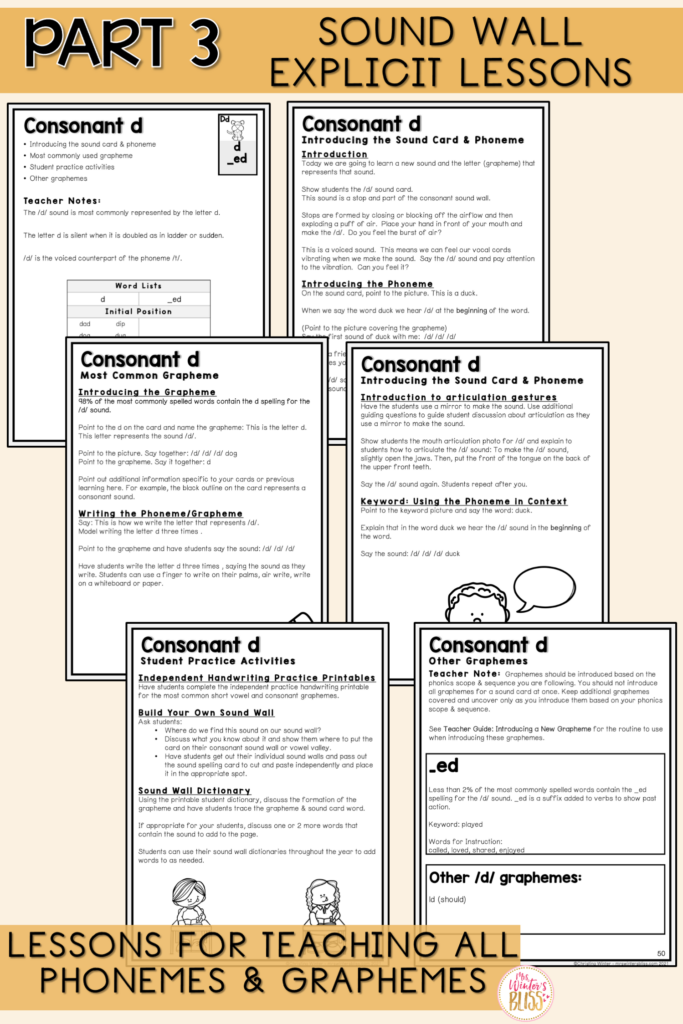
Once this explicit instruction is complete, you’re ready to move on to student practice! This resource offers 3 options for student practice.
1. Independent Handwriting Practice Printables
Included in the resource are printables for each consonant and each short vowel. Cognitive scientists report the simple act of writing by hand provides a perceptual-motor experience that unifies what is being learned about the letters (their shapes, their sounds, and their motor plans), which in turn creates richer knowledge and fuller, true learning.
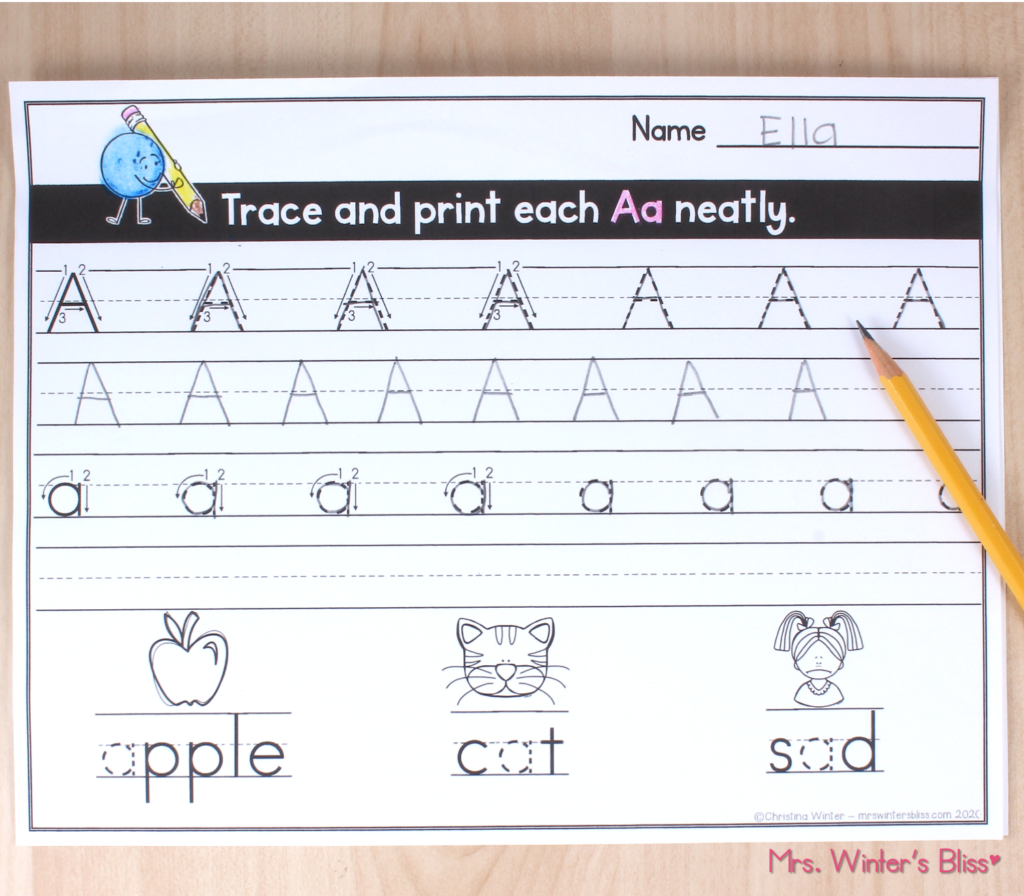
2. Build Your Own Sound Wall
This is an engaging, ongoing activity where students create their own mini-sound wall one sound at a time. After discussing what they know about a particular sound and identifying where it belongs on the wall, students then cut out the sound-spelling card and paste it in the appropriate spot on their individual sound wall.
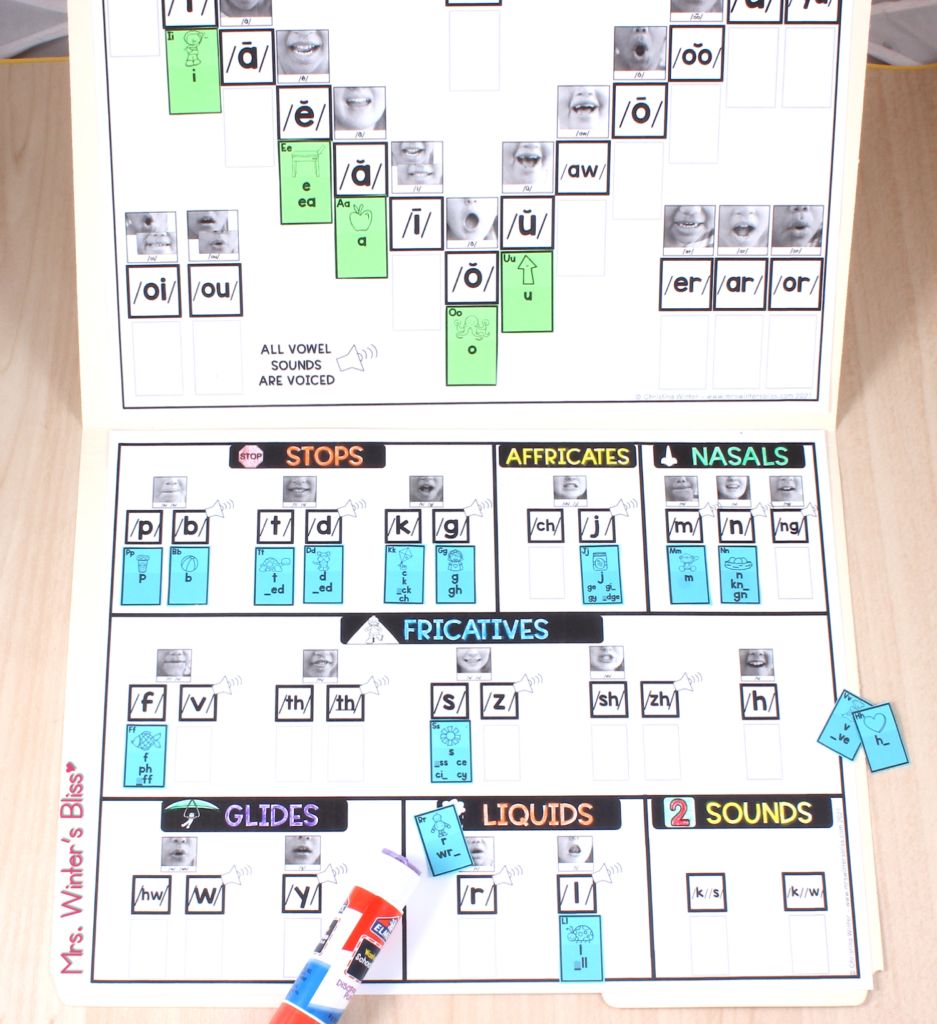
3. Sound Wall Dictionary
Using the printable student sound wall dictionary, you’ll first discuss the formation of the grapheme. Students will then trace the grapheme and the keyword. If your students are able, they can discuss a few more words that contain the sound and add them to their dictionary. As the year goes on, students can add words to it!
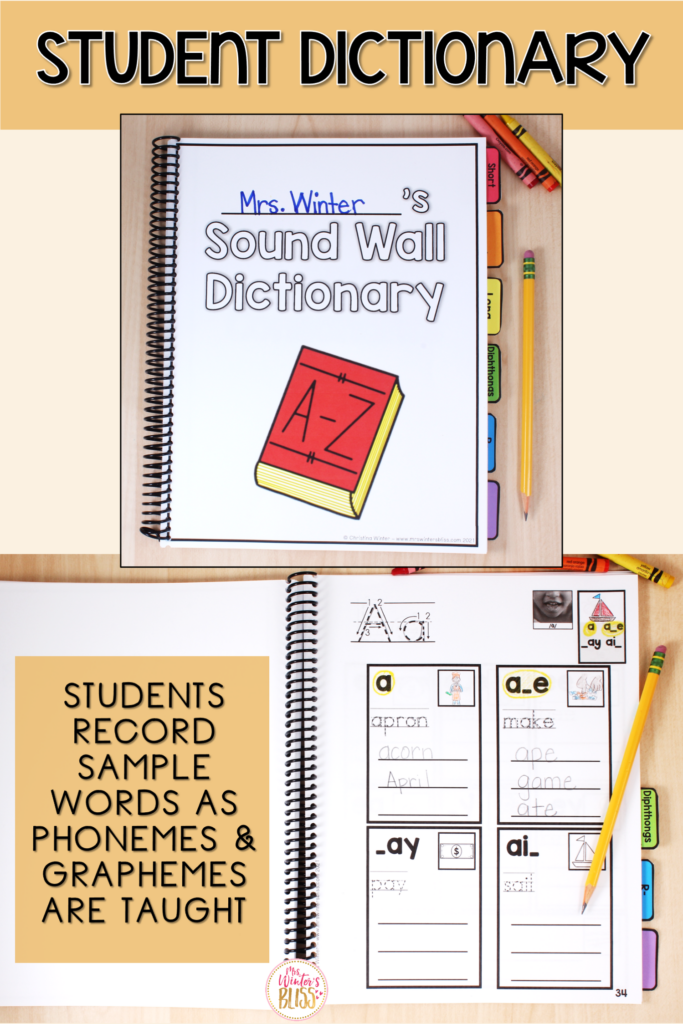
Section 4: Routines for Review
In his book, A Fresh Look at Phonics, Wiley Blevins states that a new skill should be systematically and purposefully reviewed for four to six weeks after being introduced. He reminds us that once you introduce a new phonics skill you are “in it for the long haul”. We must teach for mastery, not exposure.
Most curriculums move pretty quickly, so you really need to be purposeful about how and where you will fit phonics review into your day. To help ensure your students get the practice they need, I’ve included ideas for daily and weekly ways to review the sounds you have taught.
One fun way to review is through group chants. The guide provides you with a specific chant you can teach your students. It reviews the sound and the keyword that uses the sound, but also encourages students to push their thinking to come up with new words that contain the sound.
You’ll also get suggested activities to review graphemes and a unique spelling routine that teaches students how to use the sound wall to help with their spelling.
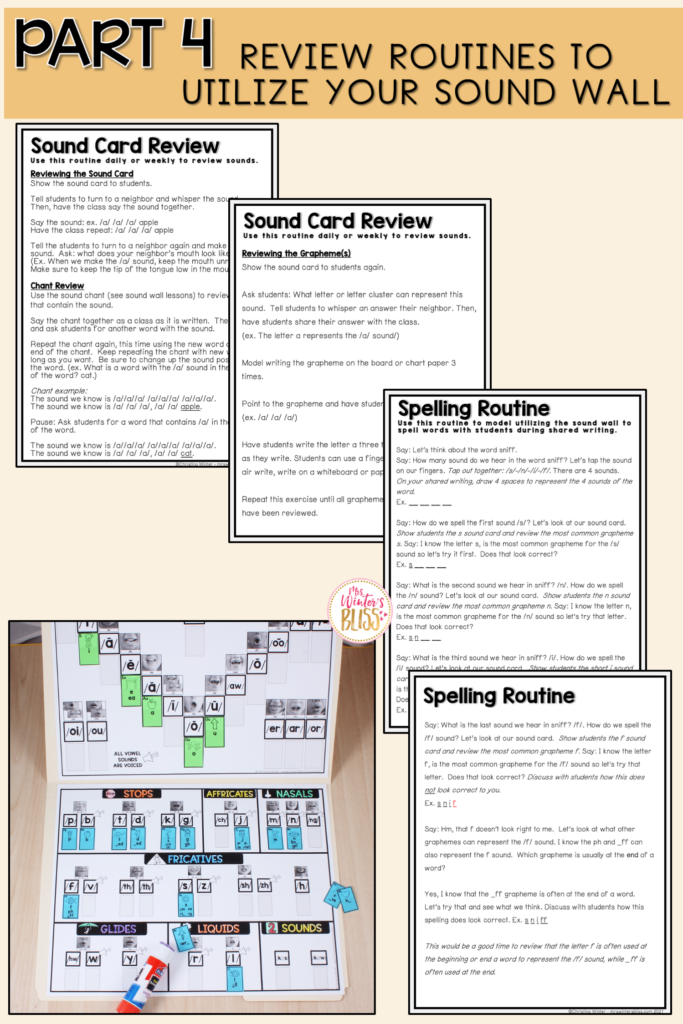
Are you ready to try out some of the lessons and activities from the guide in your classroom? To get you started I’m offering FREE Sound Wall Explicit Lessons and Sound Wall Activities! This FREE sample includes explicit lesson plans and student dictionary pages to introduce the 5 short vowel phonemes and graphemes. Grab it here—>
-
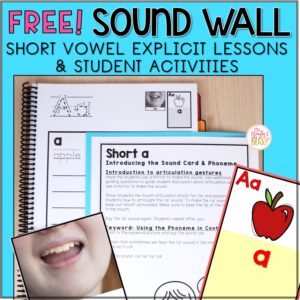 FREE Sound Wall Explicit Lessons and Sound Wall Activities$0.00Rated 5.00 out of 5 based on 27 customer ratings
FREE Sound Wall Explicit Lessons and Sound Wall Activities$0.00Rated 5.00 out of 5 based on 27 customer ratings
Implementing a sound wall in your classroom is a big change and I know change can be hard. It is my hope that this resource guide will provide you with the information, support and materials you need to make a sound wall a meaningful teaching and learning tool for you and your students!
Are you looking for more help with your classroom sound wall?
I’ve got just the thing for you!
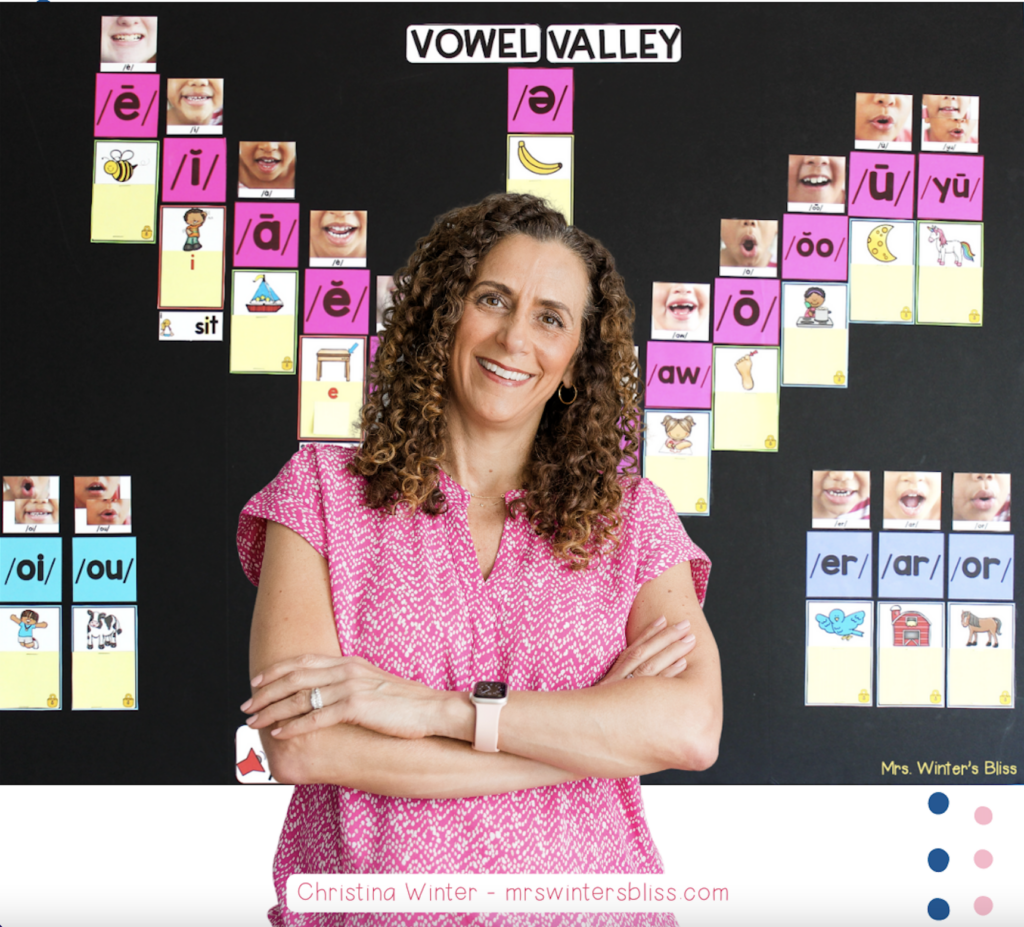
My new course, The Science of Sound Walls, will take all the guesswork out of using your sound wall. This virtual course is your complete training and implementation plan for using a sound wall in your kindergarten, 1st and 2nd-grade classroom.
DIscover what is inside The Science of Sound Walls here.
-
 FREE Sound Wall Explicit Lessons and Sound Wall Activities$0.00Rated 5.00 out of 5 based on 27 customer ratings
FREE Sound Wall Explicit Lessons and Sound Wall Activities$0.00Rated 5.00 out of 5 based on 27 customer ratings -
Sale Product on sale
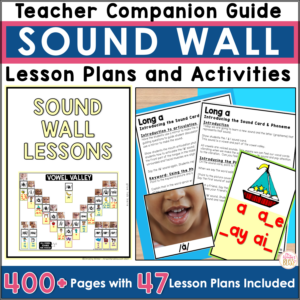 Sound Wall Explicit Lessons and Sound Wall ActivitiesEarn 0 Reward Points
Sound Wall Explicit Lessons and Sound Wall ActivitiesEarn 0 Reward Points$40.00Original price was: $40.00.$37.00Current price is: $37.00.Rated 5.00 out of 5 based on 16 customer ratings -
Sale Product on sale
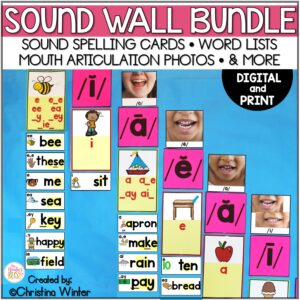 Phoneme Sound Wall with Mouth Articulation Photos – science of reading alignedEarn 0 Reward Points
Phoneme Sound Wall with Mouth Articulation Photos – science of reading alignedEarn 0 Reward Points$31.50Original price was: $31.50.$28.00Current price is: $28.00.Rated 5.00 out of 5 based on 21 customer ratings










